Health & Education
We all want the best care possible for our horses. The Heath & Education section covers both Learning Institutions, Organizations as well as many sources for equine assistance including Veterinarians and Farriers.
For those who want a to formally study horses, the Education section includes College Riding, Equine Studies, and Veterinary Schools. Learn about the wide variety of horses in the Horse Breeds section. Supplements and Treatments Therapy are also included in the section.
Everyone can learn from Fine Art and there are some specialty Museums that might surprise you.
Horses as a therapy partner enrich the lives of the disabled. These facilities are listed in our Therapeutic Riding section. To help children and young adults build confidence and grow emotionally, please see the resources available on the Youth Outreach page.
Looking for a place to keep your horse? You can find it in the Horse Boarding section. Traveling? Find a Shipping company or Horse Sitting service if your horse is staying home!
Want to stay up to date with the latest training clinics or professional conferences? Take a look at our Calendar of Events for Health & Education for the dates and locations of upcoming events.
Do we need to add more? Please use the useful feedback link and let us know!
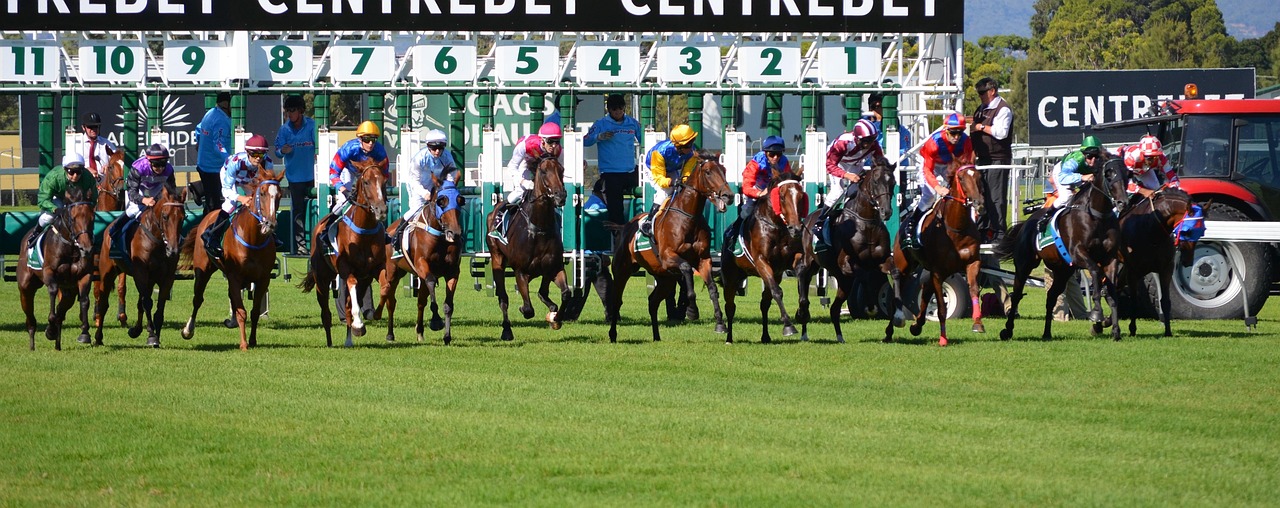
Joint health is one of the most important long-term considerations for any horse owner, whether the horse is a young athlete in training, a seasoned competitor, or a retired companion. Horses depend on the strength and mobility of their joints to take care of performance, comfort, and well-being. Due to the fact that each horse has different nutritional requirements based on the feeding schedule, age, and activity level, it is important to know how these factors affect nutritional support, particularly when making the decision of whether or not there should be a horse joint supplement added into a balanced feeding schedule.
Here is how these three key factors influence the needs of joint health and why some horses might require additional nutritional support, including equine collagen supplements.
Feeding Routine: How Daily Nutrition Influences Joint Health
The diet of a horse is a significant factor in the working of the joints and the mobility in the long term. What is ingested and the frequency of ingesting will affect body weight, tissue integrity, and musculoskeletal health in general.
Regular Eating Assists in Keeping a Normal Weight
One of the largest factors in the stress of a joint is weight management. Excessively heavy horses exert more pressure on their joints and especially the knees, hocks, and fetlocks. In the long run, such a load may test joint movement and comfort.
The feeding practices that assist in maintaining constant energy consumption and avoiding weight gain are:
Feeding practices that support steady energy intake and prevent weight gain include:
- The basis of the diet should be high-quality forage
- Regular feeding schedules to avoid spikes in appetite
- Regulated intake of concentrates among the easy keepers
- Horses with a tendency to gain and lose weight should be fed in a balanced way
Having a good body condition score implies that the curb exerted on the joints of the horses is more manageable and pulls down the strain that comes with daily movement.
Nutritional Balance Supports Connective Tissues
In addition to weight, nutrients in a feeding program may influence cartilage and ligaments and tendons. Amino acids, omega fatty acids, vitamins, and minerals in high concentrations can be used in diets to maintain the overall connective tissue.
For example:
- Structural building blocks are essential amino acids.
- Vitamins C and E help in normal metabolism.
- Copper and zinc are some of the minerals that help in the maintenance of tissues.
In case a feeding program does not include these factors, there is a possibility of increased nutritional stress on the structural systems of the horse.
Food intake influences Metabolism and Joint Load
The horse is made to graze all day long, and the duration of a break in feeding may affect the metabolic processes. Abnormal feeding habits can be the cause of variation in weight and energy, which indirectly influences the joint loads and levels of activity.
The intake of slow feeders, regular small meals, or full-day turnout assists in more natural eating habits, which help in the maintenance of not only digestive but also musculoskeletal balance.
When Feeding Routine Indicates Additional Support
Unproductive feeding schedules, insufficient access to forage or nutrient-deficient diets of horses may lead to the need to provide them with nutritional supplements, including equine collagen supplements. Collagen is a structural protein that helps in providing integrity to cartilage and connective tissues and thus is an appreciated ingredient in a good number of wellness programs.
Age: Why Joint Requirements Vary During the Lifespan of a Horse
The age of a horse is one of the most apparent signs of the alternating joint support requirements. Whether it is growing foals or aging seniors, every stage is associated with its own special considerations.
Young Horses: Fast Growth and Development
The skeletal development in foals, yearlings, and young horses is quick. During this phase:
- Joints are developing and becoming stronger
- Cartilage is still maturing
- It must have a proper balance of minerals
In general, the majority of young horses can be successfully maintained on a well-balanced diet, but certain nutritional support might be necessary, particularly for young horses that are currently in the early stages of training or whose growth spurt requires an increase in structural facilities.
Adult Performance Horses: More Joint Requirements
Adult performance horses undergo regular loading of the joints as they either trail ride or compete. With time, this activity will have an impact on natural wear and connective tissue turnover.
Typical situations that can lead to thinking about a horse joint supplement are:
- Exercise with high impact like jumping, reining, or eventing
- Intense competition schedules
- Uneven ground or rough ground
- More frequent repetitions of athletic movements
Even though supplements do not provide a certain result, they may contain nutritional elements that are mostly linked to supporting the joint and connective tissue.
Senior Horses: Mobility and Natural Aging
Through aging of horses, the thickness of the cartilage and the composition of the joint fluid, as well as mobility, may change. Seniors may also experience:
- Reduced muscle mass
- Stiffness after inactivity
- Increased need for connective tissue support
Elderly horses usually respond well to routines and diets that contain structural proteins. Equine collagen supplement is occasionally added to the diet of the seniors to help in the natural processes of the body in regard to cartilage and tissue structure.
Workload: How Activity Level Shapes Joint Support Requirements
The nature and severity of the workload of a horse have a considerable impact on the load on the joints. The joint support profile of a pasture companion and a competition athlete is very different.
Light Work: Light and Intermittent Joint Load
Light work horses normally participate in:
- Easy trail rides
- Light arena exercise
- Rarely recreational riding
Even though the joint load is moderate, regular workouts are essential to maintain mobility. Footing, weather conditions, or disrupted schedules may also cause occasional stiffness in even light-work horses. Normal conditioning and a balanced diet tend to be sufficient, but a horse joint supplement can be offered by some owners at the beginning or end of a season or when activity levels are on the rise.
Moderate Work: Regular Training and Varied Movement
The moderate activity of horses includes:
- Dressage
- Low-level jumping
- Ranch work
- Training horses in regular training
These horses have a wider scope of movement in their everyday activities, and they might have increased stress on their hocks and stifles as well as their fetlocks. The consistency of workload, terrain, and rider balance are all factors in the extent to which joint support can be taken into consideration.
Heavy Work: Intense and Repeated Stress
There are significant levels of impact on the joints of horses in vigorous training or at elite levels. Sports activities with a high speed, jumping, sharp turns, or repetitive patterns demand a higher load on the musculoskeletal system.
Examples include:
- Eventing
- Racing
- Reining
- Barrel racing
- High-level show jumping
In the case of such horses, nutritional assistance can be a part of a general management process.
Environmental Factors that Increase Workload Stress
Joint workload can be affected by footing quality, weather, and terrain and rider weight. Even the best-conditioned horse will experience the after-effects of:
- Hard or uneven ground
- Deep sand footing
- Slippery surfaces
These environmental factors are common considerations among the owners of the equine before determining whether they should incorporate a nutritional supplement like an equine collagen supplement in the feeding regime.
When Feeding Routine, Age, and Workload Overlap
The majority of horses cannot easily fit into one category; they can be senior horses in work, young horses in training with varying regular feeding schedules, or adult horses whose schedules of activities are changing.
The combination of:
- Age-related considerations
- Nutritional quality
- Activity intensity
For instance:
An elderly horse in moderate exercise might need more nutritional care compared to the idle young horse.
Even a well fed horse that works heavily can be subjected to stressors in the environment. Male athletes who have irregular feeding patterns can use supplementary structural protein sources.
Through assessment of the entire picture, owners are able to make better judgments on whether to add a horse joint supplement or not and the kind of supplement that can suit the needs of a horse.
Creating a Joint Support Strategy That Matches Your Horse
A thoughtful joint health routine combines nutrition, conditioning, management, and observation.
Key Components Include
- Regular feeding on good quality forage
- Adequate concentrations depending on workload
- Independent vitamins, minerals, and amino acids
- Regular exercising in accordance with conditioning level
- Footing and environmental concerns
- Monitoring weight and body condition
These core management strategies are usually complemented with the use of supplements such as an equine collagen supplement.
Final thoughts
The routine of feeding, age and workload are all important in deciding the joint support needs of the horse. With the knowledge of the influence of each factor on the musculoskeletal system, the owners will be able to develop a comprehensive, considerate strategy towards mobility and comfort in the long-term. Nutritional support can also be incorporated in an overall wellness program, whether it is adjusting a feeding schedule, aging horse, or even training, which has very specific demands.
There are products like Optiwize for horses that are adopted by owners of horses who are interested in adding more nutritional value to the daily routine of their horses without making any specific assertions regarding their expected results.
There are more interesting articles in our section on Health & Education.

by Kentucky Equine Research Staff
Horses can satisfy vitamin E requirements by grazing fresh, green pasture, typically consuming about 2,000 IU per day. Modern management often limits pasture access, and while hay contains vitamin E, levels decline rapidly after baling and storage. Given these challenges, routine testing is the most reliable way to confirm your horse’s vitamin E status and prevent deficiency-related disease.
Zeroing In on Your Horse’s Vitamin E Status
“Horses should receive 1–2 IU of vitamin E (alpha-tocopherol) per kg body weight. based on a daily dry-matter intake of 2% to 2.5% of body weight. Alternatively, the total diet should supply 50 to 80 IU of vitamin E per kilogram of dry matter, an amount that provides roughly the same daily intake,” explained Catherine Whitehouse, M.S., a nutrition advisor for Kentucky Equine Research.
Vitamin E blood levels can be measured by your veterinarian. According to Carrie Finno, D.V.M., Ph.D., a board-certified internal medicine clinician at the University of California, Davis, horses should maintain blood vitamin E concentrations above 2 μg/mL.*
Blood levels alone, though, do not necessarily indicate if signs of deficiency will develop.
“Whether or not a deficiency of vitamin E has an impact on health depends upon individual genetic factors, the temporal occurrence of deficiency during development, and the duration of deficiency,” explained Finno in her presentation at the 2024 American Association of Equine Practitioners Annual Convention.
For example, genetically susceptible foals with vitamin E deficiency may develop equine neuroaxonal dystrophy/equine degenerative myeloencephalopathy, whereas older horses with chronic vitamin E deficiency lasting more than 18 months may develop equine motor neuron disease. Other adults may develop vitamin E-responsive myopathy.
Finno recommended testing vitamin E status and supplementing horses that have levels below 2 µg/mL with vitamin E.
However, it is important to remember that different labs have different methods for analyzing vitamin E. Be sure to reference the specific range provided by the lab performing your test.
Choosing the Right Vitamin E Supplement
“Careful consideration of both product type and dose when targeting vitamin E supplementation in deficient horses is important,” she advised.
“Studies have shown that natural-source vitamin E is more effective at increasing vitamin E status in horses compared to synthetic vitamin E. Synthetic vitamin E (dl-alpha-tocopherol) contains eight different isomers, slightly different forms of the same compound that horses cannot use efficiently. Natural vitamin E (d-alpha-tocopherol) is made entirely of the isomer that horses absorb and use easily,” explained Whitehouse.
She added, “Supplementation levels above basic requirements are often needed to improve vitamin E status, making it essential that horse owners consult with their veterinarian and monitor how the individual horse responds to supplementation over time. Natural vitamin E is also available in different forms. Liquid products are water-dispersible, such as Nano-E, and have a higher bioavailability, making them the first choice when managing horses deficient in vitamin E.”
Why Follow-Up Testing Matters
Yes, routine testing of your horse’s vitamin E levels is recommended. If blood levels are still low in supplemented horses, additional testing for parasites or malabsorption may be recommended by your veterinarian.
Reprinted courtesy of Kentucky Equine Research. Kentucky Equine Research is an international equine nutrition, research, and consultation company serving horse owners and the feed industry.
Our goals are to advance the industry's knowledge of equine nutrition and exercise physiology, apply that knowledge to produce healthier, more athletic horses, and support the nutritional care of all horses throughout their lives. Learn more at Kentucky Equine Research.
There are more informative articles in our section on Health & Education. While you're here, be sure to visit our Curated Amazon Store.
Are you interested in promoting your business or sharing content on EIE? Contact us at info@equineinfoexchange.com
*Finno, C.J. 2024. How to assess and correct vitamin E concentrations. In: Proc. American Association of Equine Practitioners Convention 70:524-526.
We had a wonderful time at this year's Equine Affaire in West Springfield, MA.
Expert Animal Nutrition with Semican
For more than 30 years, Semican has been raising standards in equine nutrition, thanks to its expertise and reputation. Whether you own a breed of thoroughbred horses, farm horses, hiking horses, companion horses, equestrian sports such as jumping, water polo, etc. We have products that perfectly meet all these needs for complete nutrition.
Semican’s expertise in cereal production helped raise standards in animal feed, particularly with its superior quality oats for horses and more recently bird and poultry feed. Through its Research Center located in Princeville Quebec, Semican has developed excellent quality cereal cultivars resulting from a genetic program that offers a variety of oats and cereals meeting purebred racehorses, trekking and performance horses’ specific needs.
You can find Semican in our section for Horse Bedding & Feed
Are you interested in promoting your business or sharing content on EIE? Contact us at info@equineinfoexchange.com
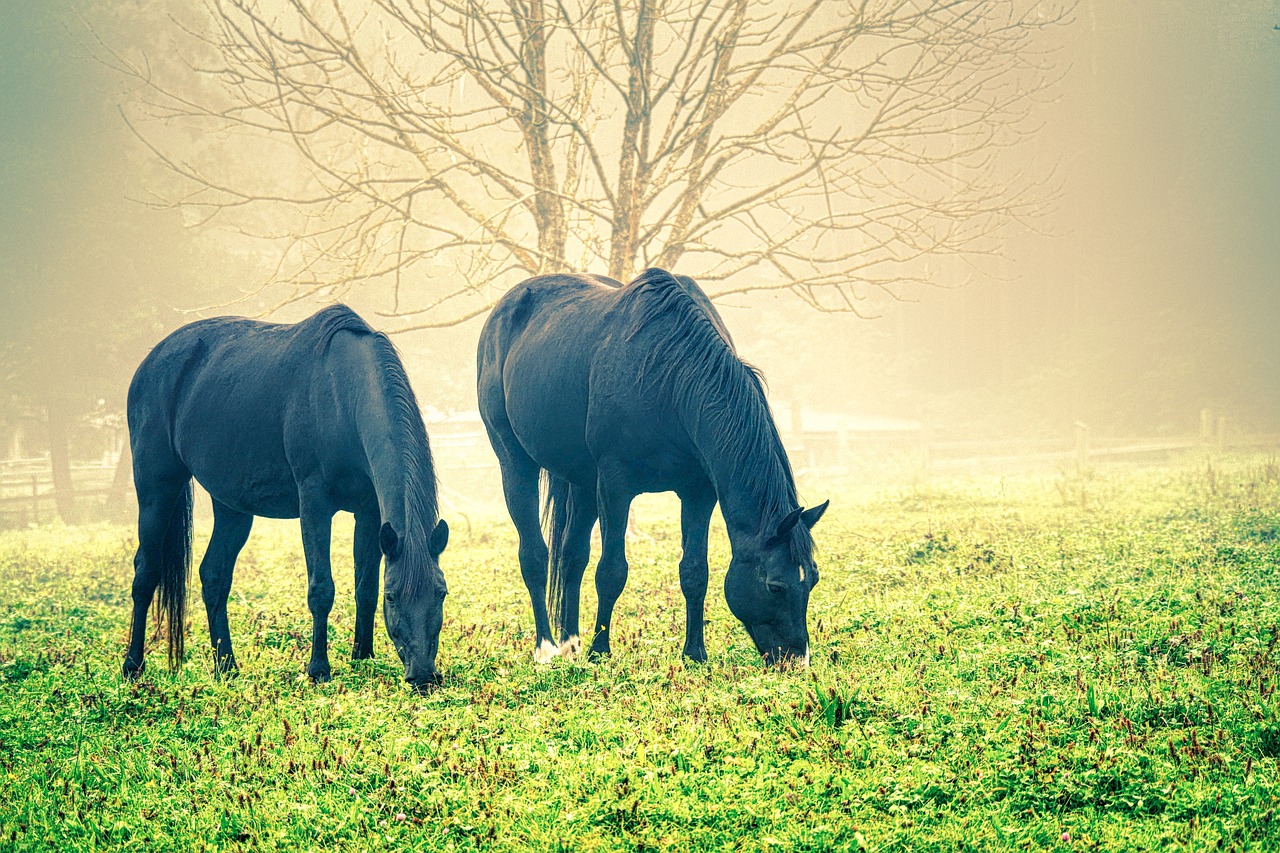
By Juliet M. Getty, Ph.D.
CBD’s popularity has mellowed over the years, but instead of fading into the background, researchers continue to expand and confirm its benefits. Most people think it is just one more supplement touted to relieve aggravating symptoms, but did you know that it is naturally occurring in our bodies as part of our endocannabinoid systems? Boosting levels that diminish due to age, stress, and illness can impact our body’s ability to heal itself.
I have written about CBD in an earlier article[i] where I explained how CBD can promote health for us as well as our horses. The goal of this article, however, is to expound upon the advantages of CBD and other cannabinoids and share with you what’s been recently discovered.
Review of the Endocannabinoid system
The endocannabinoid system (ECS) is a major signaling system that exists in you and your animals. It continually monitors any instability within the body and returns it to a state of balance or homeostasis so that the internal environment remains settled.
CBD (short for cannabidiol) and other cannabinoids are compounds that activate the receptors within this system. Cannabinoids, both naturally produced by the body (endogenous), and those supplemented from cannabis (exogenous), act as “keys” to these receptors, turning on a variety of health-promoting functions.
Within the ECS there are two main receptors -- CB1 and CB2:
- CB1 receptors exist mainly in the brain and central nervous system. They impact areas such as appetite regulation, memory, emotions, and feelings of pain.
- CB2 receptors are concentrated in the gastrointestinal tract and peripheral nervous system (nerve cells outside the brain and spinal cord) and modulate immune cell functions. When activated, they help reduce inflammation.
CBD does not make you “high”
CBD and THC (tetrahydrocannabinol) are the most studied, but they are only two, out of more than 80 different cannabinoids found in the cannabis plant. THC is intoxicating, and this is where many misunderstandings occur.
Hemp-derived CBD is not marijuana
Though both hemp and marijuana belong to the Cannabis genus, their genetic composition distinguishes them to produce vastly different amounts of THC. Hemp-derived CBD is high in CBD and very low in THC (less than 0.3%).
Hemp seed oil is not the same as CBD
It is important to understand that CBD only comes from the stalks, leaves and flowers of the hemp plant. The seeds, however, do not contain any CBD. Products just from the seeds such as hemp seed hearts, hemp seed pellets, hemp seed meal, hemp seed protein, or hemp seed oil, do not contain CBD. These hemp products offer quality nutrients and are highly beneficial for you and your animals.[ii]
How can CBD help you?
There are so many reasons to incorporate CBD and other cannabinoids into your routine. Here are a few conditions that are benefitted:
- Insomnia
- Anxiety
- Stress
- Post-traumatic stress disorder
- Pain and inflammation from injury
- Chronic pain[v]
- Cancer management[vi]
- Metabolic disorders
Understanding the CBD lingo [vii]
There are three types of CBD:
- Full-Spectrum CBD products. These contain naturally occurring cannabinoids such as CBN, CBG, and CBC, as well as terpenes and nutritious flavonoids. They do contain a tiny amount of THC, but it is quite small (less than 0.3%). All these compounds work together to provide a synergistic, “entourage” effect which multiplies their benefit. Full-spectrum CBD products are legal throughout the U.S. as long as the THC content does not exceed 0.3%. But each state has its own laws. The inclusion of a little THC enhances the efficacy in relieving symptoms.
- Broad-Spectrum CBD products. These start with full-spectrum extract and process it further to remove THC, resulting in a product with no THC (or no more than a trace -- less than 0.01%). Even so, they offer the entourage effect benefit because the terpenes and flavonoids are still present.
- CBD Isolate. This the purest form of CBD. Since it does not contain other cannabinoids, terpenes, or flavonoids, it is generally not as effective in alleviating symptoms. But it is a good choice in situations where testing is required (such as employment drug tests).
Dosing
Many products will offer the total amount of CBD in a 30 ml bottle, which typically holds 30 dropper-full servings. For example, a product that offers 1000 mg of CBD per bottle, will have 33 mg of CBD per dropper full. This dose would be a good place to start. If it makes you sleepy, try taking it at night. CBD products can go as high as 5000 mg per bottle, offering 167 mg with each dropper. Serious levels of pain and anxiety can be helped at this higher amount. But keep in mind that people are unique in their response, so it requires some trial and error.
Other products to consider:
- THC containing products. THC is the intoxicating cannabinoid found in marijuana. Concentrated in medical marijuana, it can improve the quality of life for many individuals.
- CBD + CBG. Here’s a cannabinoid that’s likely new to you – CBG (cannabigerol). It is a precursor to other cannabinoids, more commonly, CBD and THC. By taking both CBG and CBD together, it creates an incredibly effective full-spectrum blend[viii].
- CBD + CBDA. CBDA (cannabidiolic acid) is found in the raw extract, extracted from the flowering buds of the female hemp plant. It is the rawest form of CBD on the market and provides the endocannabinoid system a robust terpene unique to raw CBD extracts, making it even more effective than CBD alone.
- CBD + THC. Generally found in a gummy, this combination provides full-spectrum CBD that contains naturally occurring, hemp-derived Delta-9 THC (5 mg per gummy). It is deeply relaxing and can be helpful for chronic pain[ix]. THC is the intoxicating cannabinoid found in marijuana. Found in small amounts in most edible gummies (less than 0.3%), they are within legal limits. Added THC can improve the quality of life for many individuals.
CBD for horses
There are some recent attempts at documenting the effects of CBD on horses that have shown convincing advantages[x]. The main focus has been on treating pain, as well as situations that cause anxiety. One recent study looked at cribbing and found that CBD offered a successful treatment for this condition[xi].
Many companies sell CBD for equine consumption as the demand for these products continues to rise. Senior horses have been shown to benefit since they are more likely to experience pain and inflammation, and immune deficiencies, due to age-related conditions[xii]. Horses do well with short-term dosages, as well as long-term supplementation[xiii].
While we wait for more studies to offer confirmation, real-life experiences are showing great promise. Broad-spectrum CBD products are recommended because it is best to avoid any euphoric effects for horses.
CBD dosing should start out small with approximately 50 mg, twice daily. See how your horse responds. Some horses become relaxed and mellow, while others feel energized. You can adjust the dosage as needed, up to 200 mg per day. Keep in mind that it may take up to two weeks to see an improvement.
Here is a list of specific equine health conditions that CBD may improve:
- Immune deficiencies[xiv]
- Pain[xv]from arthritis[xvi] or laminitis
- Anxiety during stall confinement[xvii]
- Stress during traveling and shows[xviii]
- Ulcers and leaky gut[xix]
- Healing from surgery or injury[xx]
- Immune system depression from oxidative stress[xxi] experienced with Cushing’s disease
- Appetite regulation[xxii]
- Obesity[xxiii]
- Cribbing[xxiv]
- Inflammation, with the potential to reduce leptin levels[xxv]
- Insulin resistance [xxvi]
Cannabinoids for dogs and cats
Your pets also have the same ECS signaling system and can experience many health benefits that relate to both physical and mental health[xxvii]. Dosing is typically 10 mg for animals under 25 pounds, up to 40 mg for animals 75 lbs or more. Some research data have been summarized[xxviii], but most experiences are anecdotal. However, pet owners have expressed improvements[xxix] in many areas, including:
- Veterinarian visits
- Car rides
- Separation anxiety
- Destructive behavior
- Fear of loud noises
- Pain and inflammation
- Reduced mobility
- Immunity against infections
Keep watching for new studies
CBD research is being pursued on many venues, including cancer management, dementia, type 2 diabetes, and neuropathy. It is truly remarkable in its scope. Before considering CBD in any of its forms, it is best to confirm that it does not interact with any medications that you or your animals may be taking[xxx].
Bottom line
It is worth trying CBD for yourself or your animals’ health conditions. CBD supplementation may relieve suffering, promote relaxation and reduce the impact of physical ailments.
This article originally appeared on Getty Equine Nutrition and is published here with permission.
Find more informative articles in our section on Health & Education. While you're here, take a look at our Curated Amazon Store.
Are you interested in promoting your business or sharing content on EIE? Contact us at info@equineinfoexchange.com
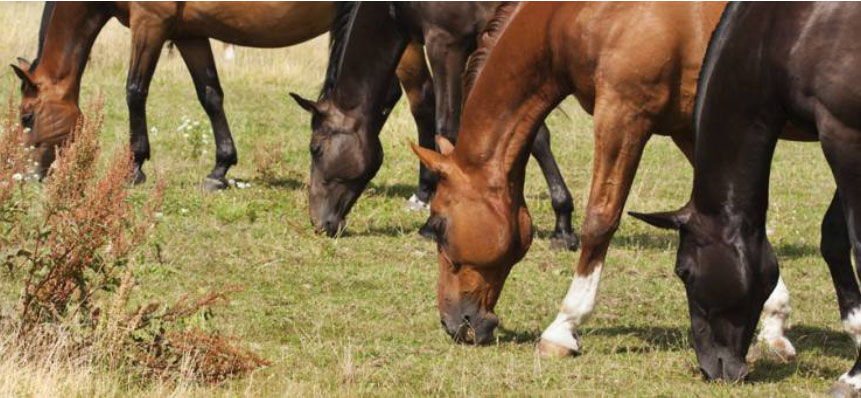
by Kentucky Equine Research Staff
The primary causes of death among horses at a retirement facility include colic, lameness, neurological deficits, and the cumulative effects of old age, according to new research from the Netherlands.
Using records from a private equine retirement center gathered over an eight-year period, researchers aimed to pinpoint the most common causes of death in aged horses and, more specifically, to determine the effects of pituitary pars intermedia dysfunction (PPID) on mortality.*
For this study, any horse 15 years of age or older was considered geriatric.
After an exhaustive review of records, researchers created fourteen categories for the cause of death: colic, lameness excluding laminitis, laminitis, down in the field, neurological deficit, sudden death, acute illness, chronic weight loss, tumor, fracture or trauma, behavior, financial, and old age. A “financial” cause of death indicated euthanasia occurred because of an owner’s inability to pay for care, and “old age” designated a horse with multiple problems that cumulatively decreased welfare and whose life ended by planned euthanasia.
All horses at the facility were overseen by professional horsemen and veterinarians and were provided with routine care. Testing for PPID occurred if there were any clinical indications of the disease (cresty neck, history of laminitis, chronic infections, weight loss).
Of the 194 horses that resided at the facility, 80 geriatric horses died during the eight-year period. Twelve were between the ages of 15 and 19 years old, 25 were between 21 and 25 years old, 32 were between 25 and 30 years old, and 11 were 31 or older. The average age of those horses that died was 26 years old. All were euthanized or died of natural causes.
The most common cause of death among this population of geriatric horses was colic (20% of cases) followed by old age (15%) and lameness that did not involve laminitis (12%). Neurologic problems and an inability to rise after lying down rounded out the top five causes of death.
“For those of us that live and breathe horses, that spend time each day with horses, that study horses, these causes of death come as no surprise,” said Catherine Whitehouse, M.S., a nutritionist with Kentucky Equine Research. “The interesting aspect of this study is that this data was all mined from the records of horses housed at a single facility under similar management conditions. Because of this, there was less variation in care than there would have been if horses had been managed at multiple farms.”
With regard to PPID, of the 194 horses that resided at the facility, 125 (63%) were tested at least once for PPID. During the eight-year-study period, 62 horses of the 125 tested died, and 47 of those 62 (76%) had tested positive for PPID at an average age of 27 years old.
According to the study, horses were maintained on a diet of free-choice haylage with and were offered supplemental feed if necessary. The teeth of all horses were examined regularly and those with missing or problematic teeth were given mashes when necessary. Weight was monitored monthly using scales. “The horses at this facility appeared to be given top-flight care, especially when it came to provision of adequate feed, dental care, and regular deworming, all of which is important when it comes to lifespan,” Whitehouse said. “Old horses sometimes require more management, but the extra investment may pay off in added years at the end of a life.”
Aged horses often benefit from targeted supplementation. High-quality joint supplements can help ease the discomfort associated with the effects of a lifetime of service, and a research-proven hindgut buffer, like EquiShure, can help stabilize the pH of the hindgut so microbes can efficiently ferment forages.
Reprinted courtesy of Kentucky Equine Research. Kentucky Equine Research is an international equine nutrition, research, and consultation company serving horse owners and the feed industry.
Our goals are to advance the industry's knowledge of equine nutrition and exercise physiology, apply that knowledge to produce healthier, more athletic horses, and support the nutritional care of all horses throughout their lives. Learn more at Kentucky Equine Research.
There are more informative articles in our section on Health & Education. While you're here, be sure to visit our Curated Amazon Store.
Are you interested in promoting your business or sharing content on EIE? Contact us at info@equineinfoexchange.com
*Van Proosdij, R., and S. Frietman. 2021. Retrospective analysis of cause-of-death at an equine retirement center in the Netherlands over an eight-year period. Journal of Equine Veterinary Science 110:103824.
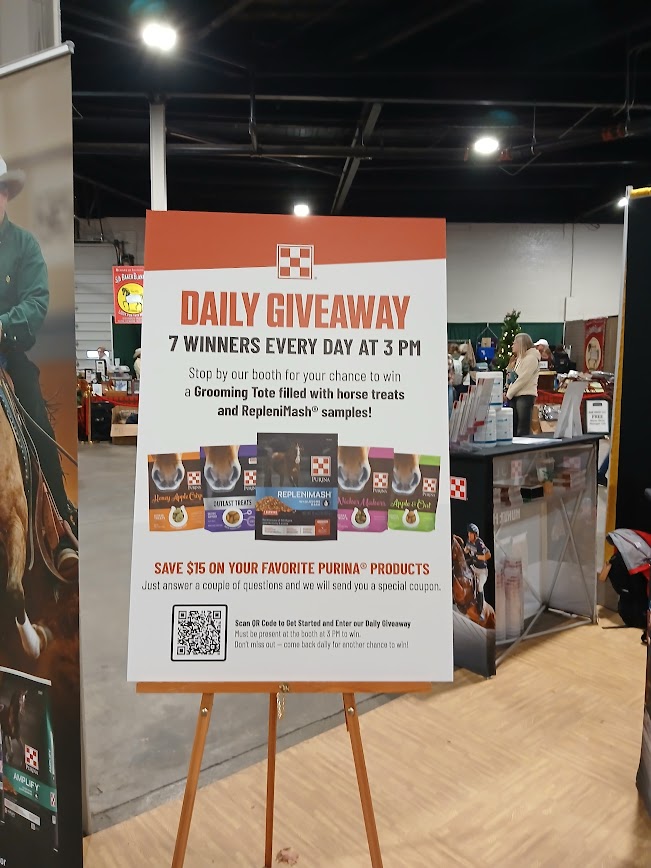
We had a wonderful time at this year's Equine Affaire in West Springfield MA. With every Purina product you’re getting the best thinking of the most accomplished group of Ph.D. equine nutritionists and equine experts in the industry.
Purina Horse Nutrition Makes a Difference You Can See
See why our research-based horse feeds and supplements are the right solutions for your horses. Our feeds are precisely formulated for your horse’s age and lifestyle. You’ll see the proof in strong hooves, shiny coats, and healthy horses.
When your horse is your teammate you'll do everything you can to help them perform. Get the performance-proven, research-backed supplements your athlete needs to bring home the win.
We’re passionate about helping horses reach their fullest potential. We are proud to sponsor A Home for Every Horse and professional ambassadors so that every horse’s story can be one of greatness.
You can find Purina in our section for Bedding & Feed.
Are you interested in promoting your business or sharing content on EIE? Contact us at info@equineinfoexchange.com
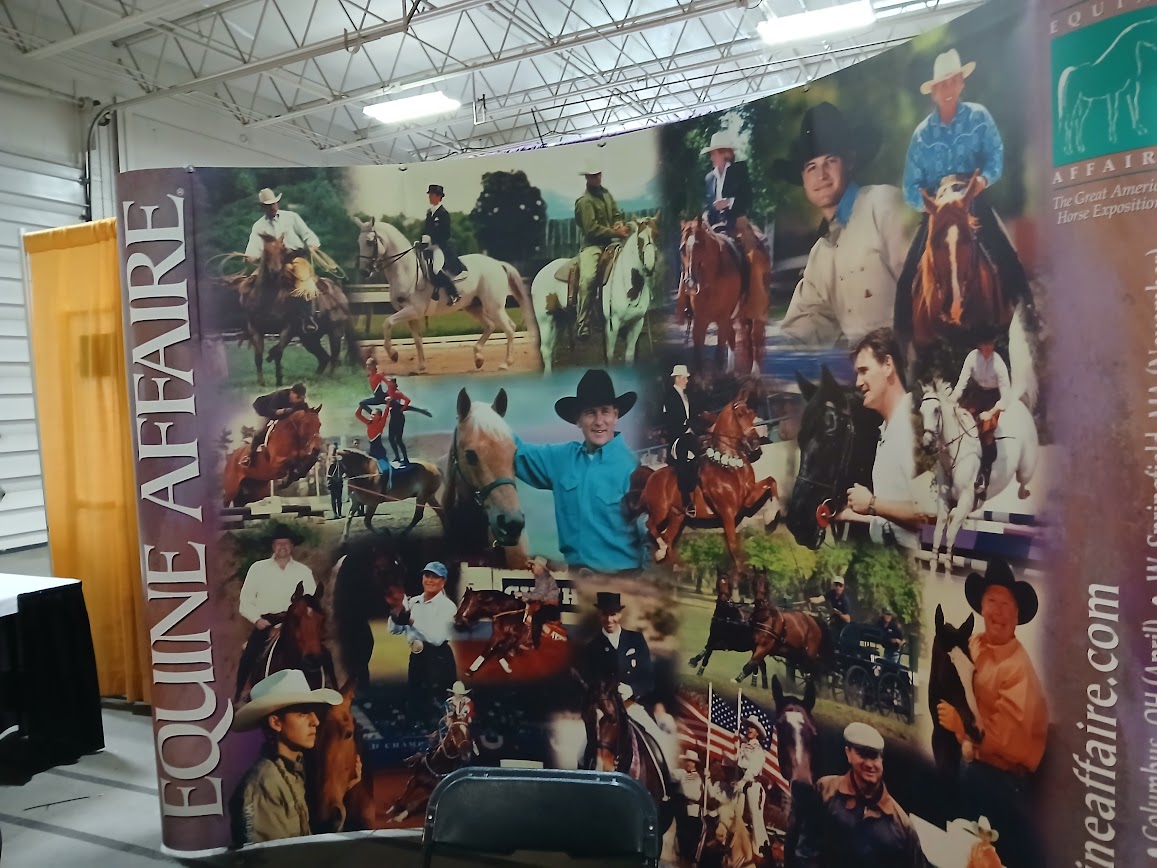
We had a wonderful time at this year's Equine Affaire in West Springfield MA.
Equi-Analytical Laboratory and Diagnostics
Our mission is to provide the horse industry with quality forage and feed analyses. Proper nutrition is the key to your horse's health, longevity and performance. Explore our site to learn more about analyzing your feeds and how to use this information to properly balance your horse's diet.
You can find Equi-Analytical in our sections for Laboratories & Diagnostics and Bedding & Feed.
Are you interested in promoting your business or sharing content on EIE? Contact us at info@equineinfoexchange.com
We had a wonderful time at this year's Equine Affaire in West Springfield MA.
Simplify Your Life With SmartPaks
Your horse is one-of-a-kind and so are their health needs. Take greater control over their health with a customized supplement program designed to meet their unique needs.
SmartPaks are convenient, pre-measured daily portions of your horse's customized supplement program. The exact support and amounts tailored to your horse's unique needs. The right portion at its freshest, every time, with airtight, pre-measured Paks A simple way to ensure your horse never runs out.
Custom-made strips clearly labeled with your horse's name to avoid any mix-ups.
There's less stress and less mess - no more scooping, no more clutter, and no more emergency trips to feed store. They are easily recyclable packaging that's made from recycled materials.
You can find Smart Equine in our section for Horse Supplements
Are you interested in promoting your business or sharing content on EIE? Contact us at info@equineinfoexchange.com
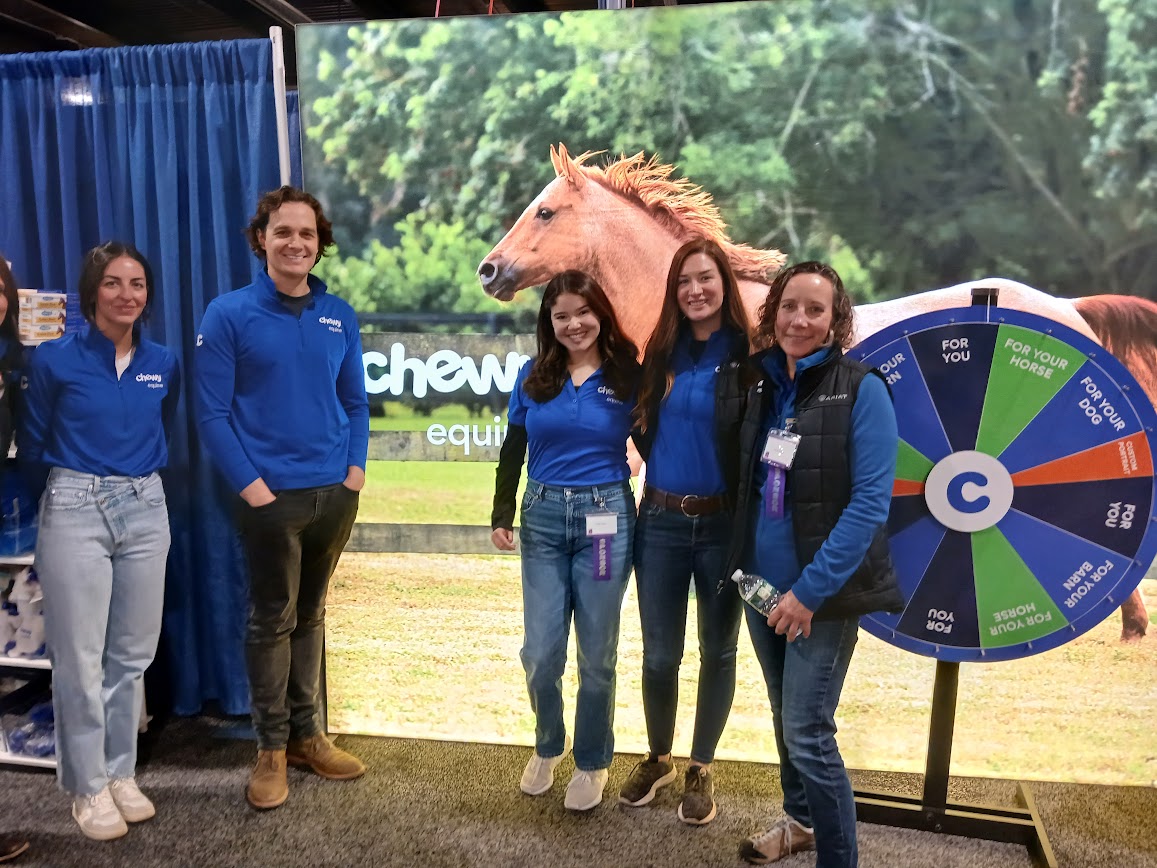
We had a wonderful time at this year's Equine Affaire in West Springfield MA. Chewy is known for dog and cat food, but they also offer a complete selection of supplements and equipment for your horse!
At Chewy, horses are the center of our universe. We wake up excited to find ways to make them happy and to make parenting easier for you. We create products they’ll love, find and offer trusted brands you’ll feel good about and deliver it all right to your door.
- "Dimples Horse Treats" at Equine Affaire 2025
- "Boehringer Ingelheim" at Equine Affaire 2025
- "HoofWand™" from Ranchers Preferred at Equine Affaire 2025
- Vaccinations Cause an Increase in Inflammation
- Using Microchips to Measure Body Temperature in Horses
- Four Directions Amino Acids Can Take - The Importance of Feeding Several Protein Sources
- Why is the American Quarter Horse the Most Popular Breed in the World?
- Get Your Goat! A Horse Companion Option
- Western Saddle Fitting 101: Tips on Proper Fit, Selecting Saddle Pads, Cinches and More
- Biggest Barriers to Human-Led Exercise in Horses
- The Importance of Canine Oral Health - Dog Dental Powders
- Ensure Your Horse's Dental Health
- Midnight Snacks: When Do Stalled Horses Eat During the Night?
- 5 Tips About Equine Vaccines
- Five Things About Performance Horse Gut Health
- Using Ultrasound to Diagnose SI Joint Disease in Horses
- Hemp Hurd Bedding for Horses
- What Pasture Snacks Mean for Horse Health
- How would you help a rider who struggles with combinations?
- Descending Gymnastics: Why Ending Smaller Can Be Smarter

































